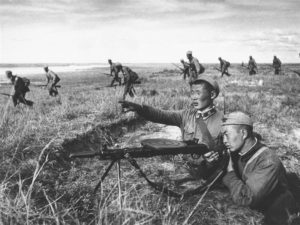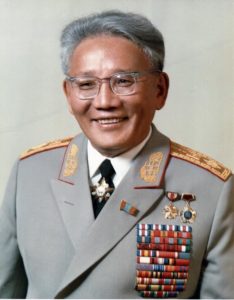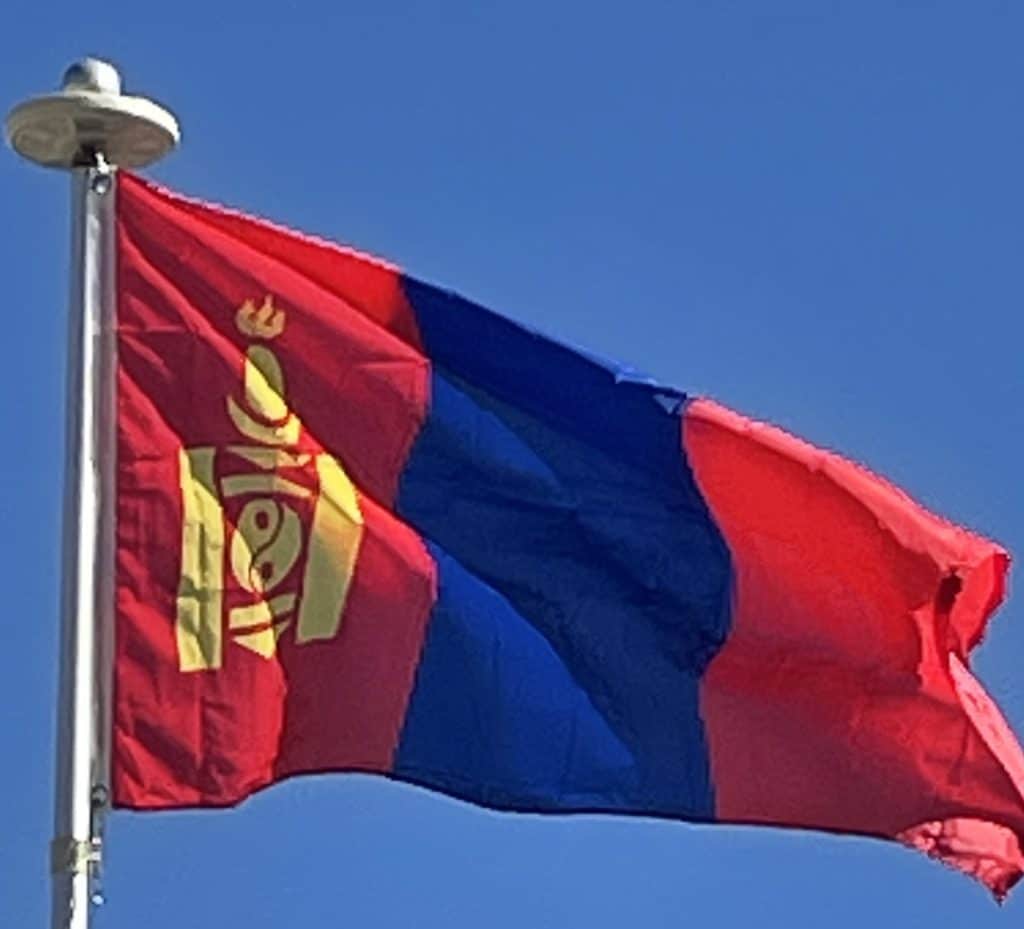
After the Japanese invasion of neighboring Manchuria in 1931, Mongolia was threatened on this front. During the Soviet-Japanese Border War of 1939, the Soviet Union successfully defended Mongolia against Japanese expansionism. Mongolia fought against Japan during the Battles of Khalkhin Gol in 1939 and during the Soviet–Japanese War in August 1945 to liberate Inner Mongolia from Japan and Mengjiang.
Cold War:
The February 1945 Yalta Conference provided for the Soviet Union’s participation in the Pacific War. One of the Soviet conditions for its participation, put forward at Yalta, was that after the war Outer Mongolia would retain its independence. The referendum took place on October 20, 1945, with (according to official numbers) 100% of the electorate voting for independence.

After the establishment of the People’s Republic of China, both countries confirmed their mutual recognition on October 6, 1949. However, the Republic of China used its Security Council veto in 1955, to stop the admission of the Mongolian People’s Republic to the United Nations on the grounds it recognized all of Mongolia —including Outer Mongolia— as part of China. This was the only time the Republic of China ever used its veto. Hence, and because of the repeated threats to veto by the ROC, Mongolia did not join the UN until 1961 when the Soviet Union agreed to lift its veto on the admission of Mauritania (and any other newly independent African state), in return for the admission of Mongolia. Faced with pressure from nearly all the other African countries, the ROC relented under protest. Mongolia and Mauritania were both admitted to the UN on 27 October 1961.

On January 26, 1952, Yumjaagiin Tsedenbal took power in Mongolia after the death of Choibalsan. While Tsedenbal was visiting Moscow in August 1984, his severe illness prompted the parliament to announce his retirement and replace him with Jambyn Batmönkh.
Post-Cold War:
The fall of the Soviet Union in 1991 strongly influenced Mongolian politics and youth. Its people undertook the peaceful Democratic Revolution in January 1990 and the introduction of a multi-party system and a market economy. At the same time, the transformation of the former Marxist-Leninist Mongolian People’s Revolutionary Party to the current social democratic Mongolian People’s Party reshaped the country’s political landscape.

A new constitution was introduced in 1992, and the term “People’s Republic” was dropped from the country’s name. The transition to a market economy was often rocky; during the early 1990s the country had to deal with high inflation and food shortages. The first election victories for non-communist parties came in 1993 (presidential elections) and 1996 (parliamentary elections). China has supported Mongolia’s application for membership in to the Asia Cooperation Dialogue (ACD), Asia-Pacific Economic Cooperation (APEC) and granting it observer status in the Shanghai Cooperation Organization.
Geography:
At 1,564,116 km2 (603,909 sq mi), Mongolia is the world’s 18th-largest country (after Iran). It is significantly larger than the next-largest country, Peru. As a point of reference the northernmost part of Mongolia is on roughly the same latitude as Berlin (Germany) and Saskatoon (Canada), while the southernmost part is on roughly the same latitude as Rome (Italy) and Chicago (USA). The westernmost part of Mongolia is on roughly the same longitude as Kolkata in India, while the easternmost part is on the same longitude as Qinhuangdao and Hangzhou in China, as well as the western edge of Taiwan. Although Mongolia does not share a border with Kazakhstan, its westernmost point is only 36.76 kilometers (22.84 mi) from Kazakhstan.
